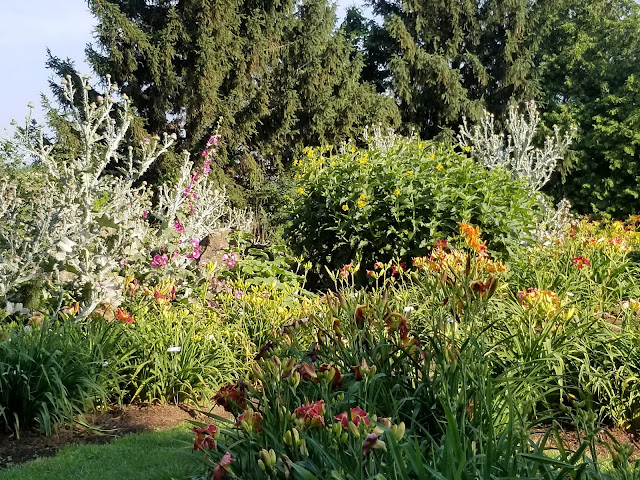There's a lot of Life in the Milkweed
We've had a pollinator garden for a few summers. It went into a already existing bed along the driveway and up until this summer it's had a reasonable number of visitors. Even if you were to ask me last month how it was going, I would have told you that it was okay, but not overwhelmingly great.
In the last few weeks, this garden is absolutely bopping. It's the place to be in our garden at the moment. First we had the Oleander Aphids. Then we had some brown ones arrive shortly after.
Finally the monarchs have made an appearance. They typically arrive in our area this time of year as they make there way down to Mexico. Last year we have a few caterpillars, but this year, we have tons. I counted close to 20 this weekend. We have a variety of instars too. From the very large, to the very small. I haven't noticed any eggs, but I also haven't looked too hard.
While we were doing our regular caterpillar count one afternoon last weekend, we noticed some other caterpillars on the milkweed. After a little research, they seem to be Tusock Moth caterpillars. The moths they turn into aren't particularly interesting, but the largest instars of the caterpillars are really interesting. They seem to have disappeared. Not sure if they moved on, or if they became someone's dinner.
It isn't surprising that we've seen some of these with all the aphids we have around. In case you don't recognize this guy, he is a ladybug larva. They are aphid eating machines, even more so than the adults. They can eat 5,000 in their lifetime. Currently the pollinator garden is a all you can eat buffet for these guys. We are happy to see them.

We've also had a few milkweed beetles around. They aren't too interested in getting their pictures taken. Instead the move to the opposite side of whatever stem they are on as you approach. We went round and round a few times before I managed to get these pictures.
Finally the anoles have made this garden their home as well. We honestly have a lot of anoles, lizards, and fence lizards in our garden. Probably because we aren't too fastidious in our fall clean-up and we tend to have an out-of-control jungle style. Lots of hiding places and plenty of protection from the winter.
Add the bees, wasps, and mud dobbers that are visiting and as you can see this garden is practically a dance club on a Friday night. With all this action, I can't to see what visits us next year.















Wow, you've got a party going on at your place. Lots of cool critters!
ReplyDeleteThanks!
DeleteThat is a party! I haven't seen much activity on my remaining milkweeds either - maybe I need to check them again.
ReplyDeleteI was shocked at everything we found after finding nothing for so long.
DeleteIsn't it rewarding to help Monarchs on their journey? You are doing a wonderful thing for a threatened species.
ReplyDeleteThey are really cool. A few years ago I got to go to a training all about them for work. It was fascinating and really got me into the butterfly gardening thing.
DeleteWe have a lot of the same bugs here. I don't have any of your lizards though. I wish we did. I find them fascinating.
ReplyDeleteI adore the anoles! They are so funny to watch.
DeleteI too had a large amount of monarch caterpillar's in my garden. They were covering my dill plants and running out of foliage to consume. I carefully moved them to the top of a large carrot going to seed so they would not starve. The next morning I was horrified when I discovered a big hole beneath the carrot plant dug by an armadillo during the night. The caterpillars had been his midnight snack.
ReplyDeleteI was not pleased.
Jeannie @ GetMetoTheCountry
A lot of my milkweeds are looking like sticks without any leaves at this point, but they've just moved to new plants. Sorry about yours.
DeleteWonderful photos. Godspeed to the Monarchs.
ReplyDeleteThanks!
Delete